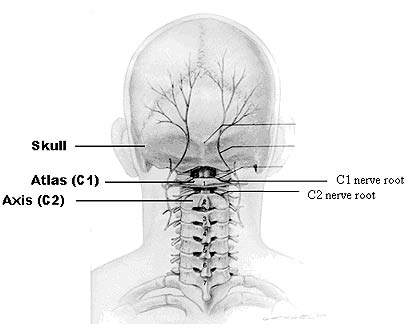A brief look into Headaches by The Physio Co.
Headaches
Headaches are widely regarded as the most common complaint amongst human beings. Athletes suffer from the same causes of headaches as the general population. There are various different types of headaches - some which are medical, some physical, and some specifically brought on by exercise:

Headaches are widely regarded as the most common complaint amongst human beings. Athletes suffer from the same causes of headaches as the general population. There are various different types of headaches - some which are medical, some physical, and some specifically brought on by exercise:

The 3rd,4th,5th categories of headaches on this list can be treated with physiotherapy. They tend to be catagorised by pains at the back or the side of the head that come on gradually without incident. They are also commonly associated with neck pain. .
Cervicogenic Headaches
This type of headache is caused by a dysfunction of the joints in the base of your skull and the top of the neck. Pain is usually caused by upper cervical nerve root irritation. The cause of these headaches is usually poor posture leading to reduced movement of the C1/2 joints in the neck. Research has found that patients with cervicogenic headaches have on average half the range on movement in their C1/2 joints to that of the general population. These types of headaches often do not respond to medication and are only relieved when the joint range of movement is improved. Physiotherapy techniques to correct posture and mobilise these joints has been shown to be an effective treatment for cervicogenic headaches
Tension Headaches
These tend to be caused by muscle tightness both in the deep neck extensors at the top of the neck and the large muscles to the side of the neck (trapezius, SCM, scalenes). As many muscles in the neck attach directly to the base of the skull, tightness in these muscles will cause a constant "pressure" in the head which can be made worse by bending forwards or diving under water. Physiotherapists will identify not only the tight muscles for stretching but also the weak muscles for strengthening to reduce the pain associated with these headache's.
Benign Exertional Headache
This exercise related headache has been identified in swimmers, footballers and weight lifters in particular. It is believed that as you increase the strain on the body and your blood pressure rises, the pain sensitive venous sinuses dilate at the base of the skull causing pain. These come and go with exercise and need to be correctly identified and treated with specific medication.
If you or your doctor believe your headaches are related to something physical then give The Physio Co. a ring. Some of our physio's have undertaken specialist post graduate courses in the assessment and treatment of headaches and have successful treated many patients in the north Devon.
BPPV/Vertigo (dizziness)
Benign paroxysmal positional vertigo (BPPV) is a common cause of dizziness. It can occur in anyone and can range from mild light headedness to room spinning nausea. It is caused by a problem within the inner ear, where small crystals that usually help with our balance, end up in the semi-circular canals where they shouldn't be. A trained physiotherapist can identify which ear is the problem using the Hallpike test and then treat your symptoms with the Epley manoeuvre .
This type of headache is caused by a dysfunction of the joints in the base of your skull and the top of the neck. Pain is usually caused by upper cervical nerve root irritation. The cause of these headaches is usually poor posture leading to reduced movement of the C1/2 joints in the neck. Research has found that patients with cervicogenic headaches have on average half the range on movement in their C1/2 joints to that of the general population. These types of headaches often do not respond to medication and are only relieved when the joint range of movement is improved. Physiotherapy techniques to correct posture and mobilise these joints has been shown to be an effective treatment for cervicogenic headaches
Tension Headaches
These tend to be caused by muscle tightness both in the deep neck extensors at the top of the neck and the large muscles to the side of the neck (trapezius, SCM, scalenes). As many muscles in the neck attach directly to the base of the skull, tightness in these muscles will cause a constant "pressure" in the head which can be made worse by bending forwards or diving under water. Physiotherapists will identify not only the tight muscles for stretching but also the weak muscles for strengthening to reduce the pain associated with these headache's.
Benign Exertional Headache
This exercise related headache has been identified in swimmers, footballers and weight lifters in particular. It is believed that as you increase the strain on the body and your blood pressure rises, the pain sensitive venous sinuses dilate at the base of the skull causing pain. These come and go with exercise and need to be correctly identified and treated with specific medication.
If you or your doctor believe your headaches are related to something physical then give The Physio Co. a ring. Some of our physio's have undertaken specialist post graduate courses in the assessment and treatment of headaches and have successful treated many patients in the north Devon.
BPPV/Vertigo (dizziness)
Benign paroxysmal positional vertigo (BPPV) is a common cause of dizziness. It can occur in anyone and can range from mild light headedness to room spinning nausea. It is caused by a problem within the inner ear, where small crystals that usually help with our balance, end up in the semi-circular canals where they shouldn't be. A trained physiotherapist can identify which ear is the problem using the Hallpike test and then treat your symptoms with the Epley manoeuvre .